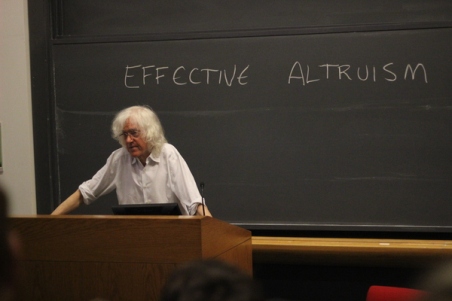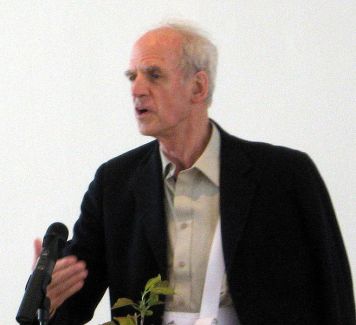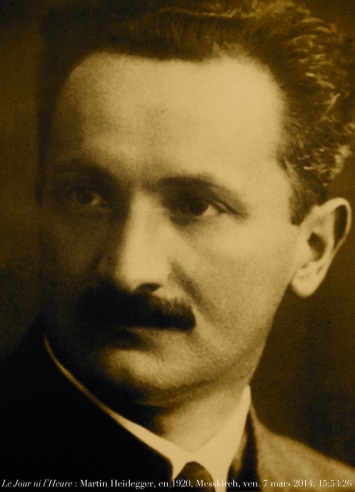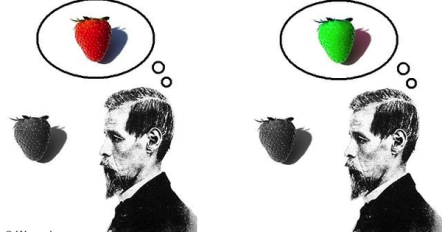In the western analytical tradition of philosophy, questions of identity have long been inclined towards asking things to the nature of
- What persists as a person ages?
- Is the person I will be in ten years the same person as I now am?
- Is identity one unchanging self, or a succession of selves?
These are metaphysical questions which discuss, in abstract, yet pertinent terms, the properties of a person, and how they are affected, under the considerations of
- Time
- Space
- Substance
I shall demonstrate this with a few examples. Firstly, In Derek Parfit’s Reasons and Persons, he claims that ‘beyond physical and psychological continuity there is no ‘deep’ further fact about the survival of the self’ (Cottingham, J. p. 296). What this means is that, on his view, the self is merely a matter of what is usefully transferred throughout our conscious life, from one moment to another, as being part of our identity psychologically, and that there is nothing non-physical contributing to who or what our ‘self’ is.
 Parfit believed that the self is consistent with its self only at the present moment. For example, if the self at present was S1, future moments in time were S2, S3, S4… the self is only who we are at S1. His reasoning is that any transformation means we are no longer that thing which was our self at S1. He concludes that
Parfit believed that the self is consistent with its self only at the present moment. For example, if the self at present was S1, future moments in time were S2, S3, S4… the self is only who we are at S1. His reasoning is that any transformation means we are no longer that thing which was our self at S1. He concludes that
“Instead of saying ‘I shall be dead’, I should say ‘there will be no future experiences that will be related, in certain ways, to these present experience’” (Parfit, D. p. 298, in Cottingham, J.).
Parfit makes the final conclusion that death is no different from aging. he reasons this because each further Sx on from S1 is an end to the self (S1), regardless of whether it is a small change, a large change, or brain and body death. Parfit concludes that
“I find it liberating and consoling. When I believed that my existence was such a further fact, I seemed imprisoned in myself… I now live in the open air… I care less about my death… After a certain time, none of the experiences that will occur will be related, in certain ways, to my present experience” (Ibid).
This view was countered by Charles Taylor, who believed that it is necessary for our sense of self to be crafted and affixed to a narrative arc. Taylor believed that in order to make sense of our lives, we need to place our sense of self in a linear context, consistent with who we believe ourselves to be. This gives us meaning in our life, but also gives us impetus to act. Taylor believes that if we consciously separate ourselves from our future and past identities (any Sx beyond or before S1), we are working against the natural state of existence, the way we usefully live, and in fact, need to live.
 Taylor explains himself in the following words:
Taylor explains himself in the following words:
“Making sense of my present action, when we are not dealing with such trivial questions as where I shall go in the next five minutes but the issue of my place relative to the good, requires a narrative understanding of my life… and as I project my life forward and endorse the existing direction or give it a new one, I project a future story, not just a state of the momentary future but a bent for my whole life to come” (Taylor, C. in Cottingham, J. p. 304).
Roderick M Chisholm considers the question of the self to be a question of “am I an ens per alio or an ens per se?” (Chisholm, R. in Kim, J and Sosa, E. p.331). by this, he means to ask whether our identity is intrinsically the same throughout time, or whether it changes throughout time. More specifically, am I one unchanging self, or a succession of new selves? This is congruent with common language, such as when somebody says ‘I’m not the person I used to be’.
Chisholm claims that we can not be a succession of selves, we are each a single self which adapts to the context of linear change:
“Will this person I posit next Thursday be me, as in the ‘I’ in its present form? Only if the next-Thursday ‘I’ was no different from present ‘I’. for something to be the same thing, it would have to share the same properties, yet if I am positing me-next-Thursday as a new ‘I’, it can’t be the same thing” (Wolfe, L. link here).
Now, these questions are very interesting questions, but they also assert a simple problem between them, which is that whilst they all ask whether selfhood is limited to its physical nature, or how time affects the persistence of identity, they don’t have an answer to the question of what selfhood exactly is. We have a functional understanding of selfhood, we understand exactly what is being discussed when we ask whether a self persists through time. However, these discussions often take for granted the need for a fundamental theory, not merely of what makes my self my self throughout time, but also at any given place in time (what makes S1 unique from the S1 at a different point in Sx).
What interests me here is a further, more reductive question. I shall pose this question as-
What makes the self consistent with its self in the first place?
This question sounds confused, so I will unpack it. When we are talking about a self at any one point in time, what we are doing is describing all the details which convey information about who I am at point x, what memories I have, what experiences I have had, what experiences I am having, what is important to me, how I am attached to the world (via my narrative arc) in terms of relationships and things I find meaningful, and so forth.
 Martin Heidegger changed the way many philosophers talk about the self by declaring that we are ‘Beings in the world’. By ‘Being’, Heidegger wanted to distinguish between the general term ‘being’, and ‘Being’ (capital B); that is to say, self as in the general term, and self as in what is specifically our unique self. He believed that the two had been horrendously confused, and that Being (capital B) was a matter of much more than what is merely biographical or metaphysical.
Martin Heidegger changed the way many philosophers talk about the self by declaring that we are ‘Beings in the world’. By ‘Being’, Heidegger wanted to distinguish between the general term ‘being’, and ‘Being’ (capital B); that is to say, self as in the general term, and self as in what is specifically our unique self. He believed that the two had been horrendously confused, and that Being (capital B) was a matter of much more than what is merely biographical or metaphysical.
Our Being was also defined by him by its relational and experiential conditions. This is what he meant when he called us ‘beings in the world’, and called existence ‘Dasein’:
“He strenuously avoids talk of humanity, man, mind, soul or consciousness, because of the scientific, religious or metaphysical assumptions such words conceal. Instead, he speaks of ‘Dasein’, a word normally meaning ‘existence’ in a general way, and compounded of da (there) and sein (to be). Thus, it means ‘there-being, or being-there” (Bakewell, S. p. 60).
If we posit that our being (or self, for our purposes, we can use these two words more interchangeably than Heidegger would have approved at present) is a being in virtue of its being-in-the-world, we have to understand ourselves in terms of our relations, not just of our inner lives. Charles Taylor was arguably correct in positing a narrative curve to which we must relate, but we must also posit a present moment and present context to which we must relate. I am who I am, and who my self is, because I relate to the things I relate to now. My identity is validated by its Dasein.
Now, we have discussed before about the importance of phenomenology in continental philosophy. Necessarily, we discussed that the phenomenologists wanted to bracket out the objective facts of the world from our experiences, so that we talk of ‘experience’, rather than ‘experience of’. When we discuss what is unique of our personal experience, we don’t necessarily have to define a relation between experiencer (subjective form) and that of which an experience is being had (objective form), but we do find an insight into the unique mental life of the experiencer.
I have previously explored, via Roland Barthes, how the content of our phenomenology has levels of depth to it. Here I discussed the psychoanalysis in the phenomenology of cleaning products in Roland Barthes’ essay Psychoanalysis and Cleaning Products:
“We imagine, when thinking of foam, the film-star, the supermodel, the lady at rest, relaxing in opulent bliss in a deep, warm bath. Foam is also telling of volume and depth, but a depth with an airy nature. One further symbol it gives us, is a religious one, a spiritual one. Foam has the powers we see in creation myth- so much is created from so little. It gives us the feeling of something divine, it contravenes human rationality. David Hume famously defined a miracle as a phenomenon which contradicts the laws of nature, and in seeing the expansion of foam, there is an unconscious feeling of the miraculous, the emergence of the spirit” (Wolfe, L link here).
 At this point we establish the fact that our experiences have causes from the outside world, and from within our mind. Those causes within our mind will have had prior external causes at one time or another, by experiencing them, for them to inhabit our minds in the first place, so we can say that all our phenomenology, that is, all our experienceable mental life, bares its phenomenology as caused by being-in-the-world by relating to it (or from it).
At this point we establish the fact that our experiences have causes from the outside world, and from within our mind. Those causes within our mind will have had prior external causes at one time or another, by experiencing them, for them to inhabit our minds in the first place, so we can say that all our phenomenology, that is, all our experienceable mental life, bares its phenomenology as caused by being-in-the-world by relating to it (or from it).
If I am, at present, definable as a happy person, it is because something in the world has caused me to be happy. Perhaps I have got a promotion at work, or merely remembered that I have a slice of cheesecake left over in the fridge, either way, the cause of that happiness is relational from outside to within.
That our experiences become us, and become us by subsuming us, has been pondered for a long time. by this is meant that our self is partly constituted by our experience. It has even been long considered that external causes will not merely lead to mental states, but that mental states will have inevitable further relational states. The night before Socrates’ death, he mused that
“this state we call “pleasant”; how curiously it’s related to its supposed opposite, “painful”: to think that the pair of them refuse to visit a person together, yet if anybody pursues one of them and catches it, he’s always pretty well bound to catch the other as well” (Plato, Phaedo 60b-c).
This is by the by. The point is that if it is true that there is a real sense in which who we are (our being/self) is defined by our relations at a moment in time, then who we are in those relations is arbitrary because those relations are arbitrary, they are merely contingent relations, and the phenomenologies we have are therefore contingent.
Where, then, is the being/self which is us? I argue that being isn’t what the self is when it relates, but what relations and phenomenologies it has the potential of having. My ‘being’ isn’t in my experience ‘happy’ from finding cheesecake in my fridge, but from the potential fact that I would elicit the response ‘happiness’ upon finding cheesecake in my fridge.
‘Being’ is the fact of our potential relations and their values, not the real-world relations we have
 At the start of Jack Kerouac’s On the Road, Dean Moriarty is described as
At the start of Jack Kerouac’s On the Road, Dean Moriarty is described as
“the perfect guy for the road because he was actually born on the road, when his parents were passing through Salt Lake City in 1926, in a jalopy, on their way to Los Angeles…
[He] so naively and sweetly asked Chad to teach him all about Nietzsche and all the wonderfully intellectual things that Chad knew” (Kerouac, J. p. 7).
This description of Dean Moriarty isn’t Dean Moriarty’s being, it is his being-in-action, it is a description of a person after several arbitrary relations have been drawn to their being. This creates the specific form of being-in-the-world through which we come to know Dean Moriarty. What we see here is that we can never know a person’s pure being, all we see are the relations, through which glimpses of being become present.
But what does this have to do with our asking what makes the self consistent with the self? The point emerges presently: if our self in the world is a matter of arbitrary contingencies, then that self (S1) is its self in virtue of being consistent with its response to its context, not to its being. If we took the being we are at S1, and changed the context completely, we would draw a completely different set of relations, and our being would produce a different self.
I believe that the self (Being) is consistent with the self up to the point of its relating to the world. At this point, the self is regenerated through the accumulation of further relations. We must, after all, accept that there is a degree that any relation, producing a phenomenological experience, or some form of mental response otherwise, will transform that being which was the being it was, and into the being it now is.
At this point, I need to dichotomise ‘being’ and ‘self’ as follows:
- Being is that thing which is us as our potential to relate in various ways, specific to us, to the world
- Self is that thing which is us as we relate to the world, self is being in action, or being-in-the-world
Being is consistent with its self (self-consistent) when it is in a state of potentiality. I mean that it is consistent with its self until it has related. Once a self has been produced from Being by a being-in-the-world contingency positively, I.E. the world has created a contingency in the mind which has actuated self from being, being is no longer consistent with being, but with self.
Self is consistent with its self at that moment when self is S1. On this view, we manage to answer the question about how self relates to its self, but we also reconcile the views of the traditional analytic philosophers. We can have the narrative arc which Charles Taylor posits, whilst defending the position of Derek Parfit in saying that ‘death is no different from aging because each further Sx on from S1 is an end to the self, regardless of whether it is a small change, a large change, or brain and body death’.
Whilst Taylor and Parfit are having the same discussion, Taylor is talking about self, whilst Parfit is talking about being (in the above arguments). This shows a need for clarity in the language we use because a simple confusion can veritably muddy the waters significantly. Being is the grounds of self, and self influences and recreates being. This shows how the ‘I’ has continuity, without having the problem Roderick M. Chisholm has. Chisholm argues that we must be one self, rather than a succession of selves:
“suppose that there is a person x who happens to know, with respect to a certain set of properties, that there will be a certain person y who will have those properties at some future time, and x asks himself: ‘Will I be he?’ Either x is identical with y, or x is diverse from y” (Chisholm, R. in Kim, J and Sosa, E. p.333).
He concludes that
“the me of the future has to be the same ‘I’ as the self at all present points in time, including the present ‘I’” (Wolfe, L) because if x is identical with y, then x and y would both be x. Chisholm then concludes, because he can’t reconcile continuity and change, then the self is the same at all times. He concludes that
“we should think of the self like Water. If you reduce the temperature of liquid water to below zero, it will freeze. If you heat it to above 100, it will turn to steam. It is a mistake to think of one or another as the true nature of water, they are all the true natures of water under different conditions. In the same way, Jones in five years is still the true Jones, merely Jones under the condition ‘five years in the future’” (Ibid).
However, under our proposed view of being and self, we can explain and reconcile the problem that Chisholm had. Whilst Taylor was talking about self, and Parfit was talking about being, Chisholm is talking about the two as one, without them being separated. Instead of asking whether x would be identical with y, I propose our Sx system, understanding that we are not looking for exact continuities of selves because the selves (Sx) are incidentally different, each of them being-in-the-world, whilst being different Beings in different worlds because each context is effectively a different world.
In the Chandogya Upanishad, a student named Shvetaketu is learning about the self from his father. The following conversation takes place:
“Bring me a fruit from the nyagrodha tree.”
“Here it is, Sir.”
“Break it. What do you see?”
“These seeds, Father, all exceedingly small.”
“Break one. What do you see?”
“Nothing at all.”
“That hidden essence you do not see, dear one, from that a whole nyagrodha tree will grow.” (12.1-3).
The seed and fruit are the self, the essence is the Being. I believe, as a soft physicalist, that Being is just as physical as self, but without self, how can there be any being? Being needs to exist in the world, just as the nyagrodha essence needs to be contained within a seed. No seed, no tree. In the same way, our early selves are a seed, and our being is a veritable essence. As the selves succeed themselves, the Being becomes an essence which is no longer contained in a seed, but a tree. The essence becomes more developed as the tree grows.
To conclude
I believe that we need to distinguish between Being and Self. I believe that Being is our ‘I’ as a set of possibilities. It is what we, as a person, are dispositionally likely to feel or do under certain conditions. Our Self, however, is that being in action, which makes it being-in-the-world. When our Being relates to the world, it becomes Self. I believe that Being is our essential nature, but our identity is found in our Self. As one grows, the other grows with it, the Self feeding information to our Being, evolving our essential nature.
I believe that Derek Parfit is right in saying that our identity ends with each change in our nature. Perceptibly, it is true that who we are changes, and dies with each change. However, I agree with Charles Taylor when he says that we need a linear narrative arc to group our Selves together. I think that this dichotomy of Being and Self reconciles the seeming conflict between the two views. It allows us to reap the benefits of Parfit’s Buddhist-inspired view of the self, whilst also working with Taylor’s practical form of personal identity, in which we realise that self needs to be thought of as a part of the world, however arbitrary considerations may be.
Works cited
Bakewell, S. (2017) At The Existentialist Cafe. London: Penguin Random House
Chisholm, R. M. (1999) ‘The Persistence of Persons’, in Jaegwon Kim and Ernest Sosa (eds), Metaphysics: An Anthology. Blackwell Publishers Ltd.: Oxford, pp. 331 – 337
Parfit, D. (2008) ‘Liberation from the Self’, in John Cottingham (ed), Western Philosophy: An Anthology (2nd edition) Blackwell Publishing Ltd.: Oxford, pp. 296 – 302
Kerouac, J. (1972) On the Road. London: Penguin Books
Plato. (date unknown) Phaedo, translated by David Gallop. Reprint, Oxford: Oxford University Press (2009)
Taylor, C. (2008) ‘Selfhood and Narrative Understanding’, in John Cottingham (ed), Western Philosophy: An Anthology (2nd edition) Blackwell Publishing Ltd.: Oxford, pp. 302 – 307
The Upanishads, (2nd edition) translated by Eknath Easwaran. The Blue Mountain Center of Meditation: Canada. (2007)
Wolfe, L (2017), ‘Barthes on… Psychoanalysis and Cleaning Products’, The Wolfe Review. Available at: https://thewolfereviewblog.wordpress.com/2017/09/26/mythologies-barthes-on-psychoanalysis-and-cleaning-products/ (accessed 18th March 2018)
Wolfe, L (2018), ‘The Persistence of Persons- Roderick M. Chisholm’, The Wolfe Review. Available at: https://thewolfereviewblog.wordpress.com/2018/02/13/the-persistence-of-persons-roderick-m-chisholm/ (accessed 18th March 2018)

Its on spontaneous generation rather than self but not without its interest.
Remke Kurk ‘A frothy bubble: spontaneous generation in the medieval islamic tradition, Journal of Semitic Studies XXXV/2 Autumn 1990 (easy to find freely online)
Its conclusion on the question of continuity in the reproduction of living beings is historically interesting.
“The ancient philosophers, however, seem not to have been worried by this aspect of matter.”
LikeLike
Thank you for the article, It’s an area I know little about, but wish to understand better. When I was a student, our studies were centered almost entirely on modern debates, but I’m finding a lot of relevant wisdom in the older texts.
LikeLike
Methinks Heidegger – like so many philosophers – engages in mental speculations. Rather than engaging in such activity (for years), one might posit the question: why not just live life, and not fret over mental speculations about it? (Or, would such a question itself be cause for a whole new branch of philosophical inquiry?)
LikeLike
I’m conflicted because I agree with you for the best part, in that one can live life or think about life, but I find myself compelled to read them, and write about them, simply because it’s what I enjoy.
I was a member of a western Buddhist group for years when I was younger, I think that there is a real sense in which that impetus of inner reflection never leaves you.
LikeLiked by 1 person
Not really.
What is the nature of classification/ what is the origin of abstraction. Traditional explanation is an appeal to common sense/ ethical judgment.
How we engage with or use such classification/ abstractiion it’s relationship with life & anxiety. i.e. I think I see a tiger called Heidegger hiding in the bush. More behavioral psy. than philosophy.
Heidegger may or may not be in the bush but avoiding the bush is a low cost option. Here mental speculation or abstraction allows you to live you’re life.
To not engage in mental speculation would not require a new form of philosophy more a new type of life form that was much lower down the food chain.
LikeLike